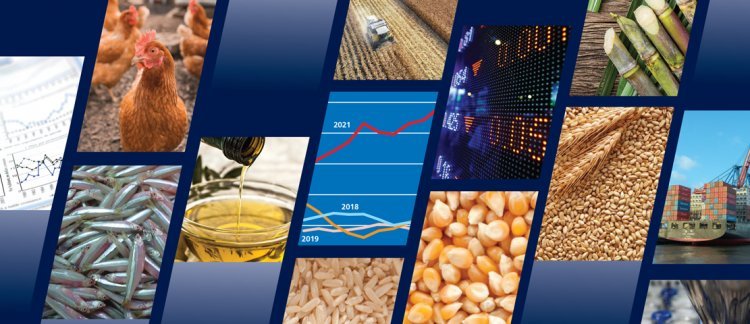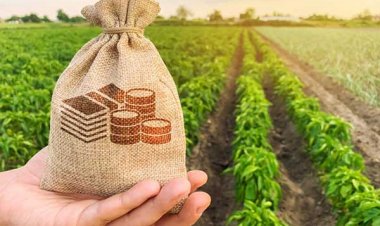Inflation effect: Global food import bill set to rise to nearly $2trn, but import by poor countries decreases
The bulk of the increase in the bill is accounted for by high-income countries, due mostly to higher world prices, while volumes are also expected to rise. Economically vulnerable country groups are being more affected by the higher prices. For instance, the aggregate food import bill for the group of low-income countries is expected to remain almost unchanged even though it is predicted to shrink by 10 per cent in volume terms.

The world food import bill is estimated to rise to $1.94trn in 2022, higher than previously expected, according to a new report released by the Food and Agriculture Organization of the United Nations (FAO) on November 11. The new forecast presented in FAO’s Food Outlook would mark an all-time high and a 10 per cent increase over the record level of 2021. However, the rate of increase in the import bill would be less than the 18 per cent last year.
The pace of the increase is expected to slow down for two major reasons. One, higher world food prices. And two, depreciating currencies against the United States dollar. Both weigh on the purchasing power of importing countries and, subsequently, on the volumes of imported food.
The bulk of the increase in the bill is accounted for by high-income countries, due mostly to higher world prices, while volumes are also expected to rise. Economically vulnerable country groups are being more affected by the higher prices. For instance, the aggregate food import bill for the group of low-income countries is expected to remain almost unchanged even though it is predicted to shrink by 10 per cent in volume terms, pointing to a growing accessibility issue for these countries.
“These are alarming signs from a food security perspective, indicating importers are finding it difficult to finance rising international costs, potentially heralding an end of their resilience to higher international prices,” the report from FAO’s Markets and Trade Division warns.
The Food Outlook report, which breaks down food trade patterns by food groups, warns that existing differences are likely to become more pronounced. High-income countries continue to import across the entire spectrum of food products, while developing regions are increasingly focused on staple foods. In this context, FAO welcomes the approval by the International Monetary Fund (IMF) of a Food Shock Window — broadly based on FAO’s Food Import Financing Facility proposal — as an important step to ease the burden of soaring food import costs among lower-income countries.
Input import bill up 48 per cent due to higher costs for energy and fertilizers
The Food Outlook also assesses global expenditures on imported agricultural inputs, including fertilizers. The global input import bill is expected to rise to $424bn in 2022, up 48 per cent from the year before and as much as 112 per cent from 2020. The highest increase will be in the import of energy and fertilizers. While the energy import bill is estimated to go up from $125.2bn in 2021 to $197.5bn this year, fertilizer imports are likely to escalate from $107.5bn to $168bn.
Higher costs for imported energy and fertilizer are particularly relevant in import bills, posing strains for the current accounts of low-income and lower-middle-income countries. As a result, some countries may be forced to reduce input applications, almost inevitably resulting in lower agricultural productivity and lower domestic food availability. “Negative repercussions for global agricultural output and food security” are likely to extend into 2023, according to FAO.
Issued twice a year — in June and in November — Food Outlook offers reviews of market supply and utilization trends for the world’s major foodstuffs, including cereals, oil crops, sugar, meat, dairy and fish. It also looks at trends in ocean freight rates. Supplies of most of these major commodities are at or close to record levels, but multiple factors point to tighter markets ahead.
Record production of wheat, but accumulations mostly in China and Russia
According to the report, world wheat production is forecast to reach a record 784mn tonnes in 2022/23, buoyed by significant harvest recoveries in Canada and the Russian Federation. That should push global wheat inventories to record levels. However, the report notes that the accumulations are expected mostly in China and the Russian Federation, while stock levels are predicted to drop by 8 per cent in the rest of the world.
Coarse grain inventories are forecast to fall to their lowest levels since 2013 due to inventory drawdowns in major countries as a result of anticipated declines in production. Global coarse grain production is forecast to fall by 2.8 per cent in 2022 to 1,467mn tonnes. While it will likely drop in 2022/23, world rice output is envisaged to remain at an overall average level, buoyed by resilient planting levels in Asia and recovering output in Africa. Although inclement weather and sharp hikes in input costs are predicted to lower world rice output for the first time in three years, the 2022/23 global harvest is still envisaged to remain at an overall average level of 512.6mn tonnes (milled basis). The rice harvest stood at 518.1mn tonnes two years ago and at 525.1mn tonnes last year.
Oilseed and sugar production to increase
Global oilseed production is forecast to rebound and reach an all-time high in the 2022/23 marketing year. Increased outputs of soybean and rapeseed are expected to offset a likely drop in sunflower seed production. Total oilcrops production is estimated at 654.5mn tonnes, an increase of 7 per cent over that of 2021-22.
Global sugar production is also forecast to increase. For one, there are expectations of a significant recovery in Brazil’s production. Two, there are larger crops in China and Thailand. FAO’s preliminary forecast for the 2022/23 (October/September) season pegs world sugar production at 179.6mn tonnes, up 4.5mn tonnes, or 2.6 per cent, from the 2021/22 outturn. On the other hand, sugar consumption is seen growing at a slower pace.



 Join the RuralVoice whatsapp group
Join the RuralVoice whatsapp group






































